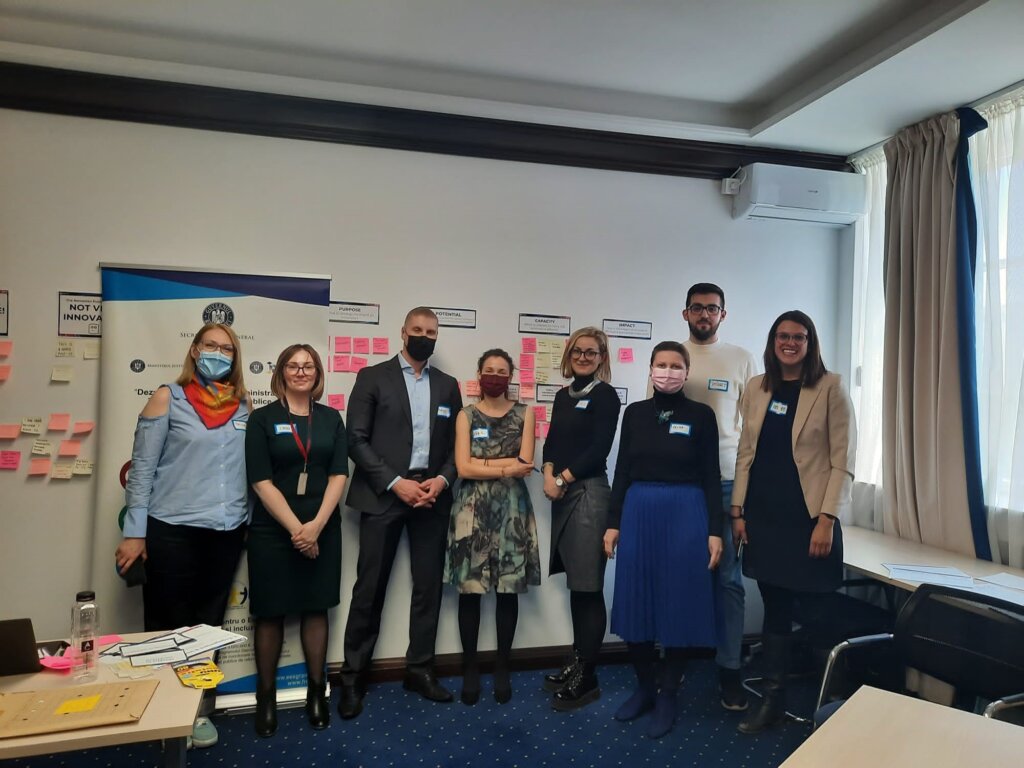Linking Ambition to Action: A framework to build innovative capacity

When working with stakeholders around the world, we often ask them:
If you could wave your magic wand, what would you change about your country’s public sector to make it more innovative?
While the responses vary, one aspect remains unwavering, regardless of the country of study: that individual public servants are strongly motivated to innovate and push for change, even though the systems they work in are sometimes fighting against this.
We need to better respond to expectations from citizens, because government is, or should be, addressed to serve citizens. In order to meet citizens’ increasing expectations, you need to innovate and be prepared to tackle the issues that are more and more sensitive and increasingly normative or challenging
Interviewee from the Romanian Government

Innovative Capacity Wish-List:
Regardless of the country of focus, a number of needs often come up in response to this question:
- a clear purpose and drive for innovation from leadership, including at the political level, in order to create innovative culture across the public sector, a culture that’s open to risk-taking and experimentation
- flexible working practices, regulatory and legal frameworks to create an innovative and risk-courageous culture that has the potential for intentional innovation
- concrete capacity for innovation, not only skills, but also productive partnerships across sectors and departments to harness diverse knowledge and work in cohesion on systemic issues
- mechanisms to meaningfully engage stakeholders to develop, iterate and evaluate solutions to ensure they are impactful and truly meeting the needs of the population
Much of our work at the OPSI is about supporting governments to enable this ambition and motivation (purpose for innovation) to flourish. This demands an enabling environment (potential), the necessary skills and supports (capacity) and an understanding of affects to move from ambition to action (impact). Sadly, without these elements, purpose rarely leads to change and, when it does, it is typically done in ad-hoc ways, relying on individual efforts rather than the system as an enabler of innovation.
Unfortunately, there is no magic wand to turn purpose into solutions. However, OPSI’s recently published Innovative Capacity Framework helps governments move away from innovation as an ad-hoc activity towards supporting innovative capacity as a critical and systemic resource for governments. The Framework aims to provide a consistent methodology for understanding innovative capacity that builds on and complements existing frameworks, improves comparability across countries and is adaptable to country needs. It explores innovative capacity through the lens of four key questions, which are further informed by the examination of the interactions across range of factors and elements:
1. Purpose: What is driving the intent to innovate?
2. Potential: What elements across the system influence whether innovative efforts are attempted?
3. Capacity: What is needed to carry out innovative efforts?
4. Impact: How is the impact of efforts understood and how does it inform future practice?

The Innovative Capacity Framework in Practice
The Framework offers a strong foundation for understanding innovative capacity across public sector systems, including how it interacts at the individual, organisational or public sector systems level. However, to understand how governments can leverage innovative capacity in the face of their complex realities, practical implementation is what truly counts. In March 2022, OPSI was on the ground in Bucharest working with stakeholders to explore the innovative capacity of the Romanian public sector. The mission not only marked the first step in the collaborative journey, moving from ambition to action, but also the first practical application of the Framework.

Our vision for the Romania project is ambitious. Together with stakeholders we are working to develop “an innovative public sector that works collaboratively to design policies and provide seamless and effective services that meet the current and future needs of society.” We are excited to jointly dive into this work and use the Innovative Capacity Framework to understand and enable systemic change across the Romanian Government.
This first mission was crucial for developing an understanding of the which factors truly impact and resonate with individuals operating in, and interacting with, the public sector system. We will be back in the Bucharest in May this year to discuss key directions and explore trade-offs in carrying this agenda forward. Discussions will feed into a co-created action plan, translating the understanding and learnings gleaned from applying the innovative capacity framework into action.

The motivation to build innovative capacity in Romania is strong now it’s time to leverage tensions and challenges in the system to enable that motivation to transform into reality.
Background
Did you know? OPSI’s Innovative Capacity Framework builds on global best practices, OECD research and first-hand country experiences (such as work with Canada, Brazil, Latvia and Denmark) to provide governments with a resource that offers a systemic perspective on how to understand and support innovative capacity. The Framework was tested globally with experts from Colombia, Luxembourg, Australia, the Netherlands, Portugal, Denmark, Latvia, Germany, Spain, South Africa and Sweden and underwent a public consultation to ensure it meets the evolving needs of governments. You can read more about the Innovative Capacity Framework here. OPSI will continue to work with countries to implement this Framework in action. For more information about our work on innovative capacity, reach out to us here.











